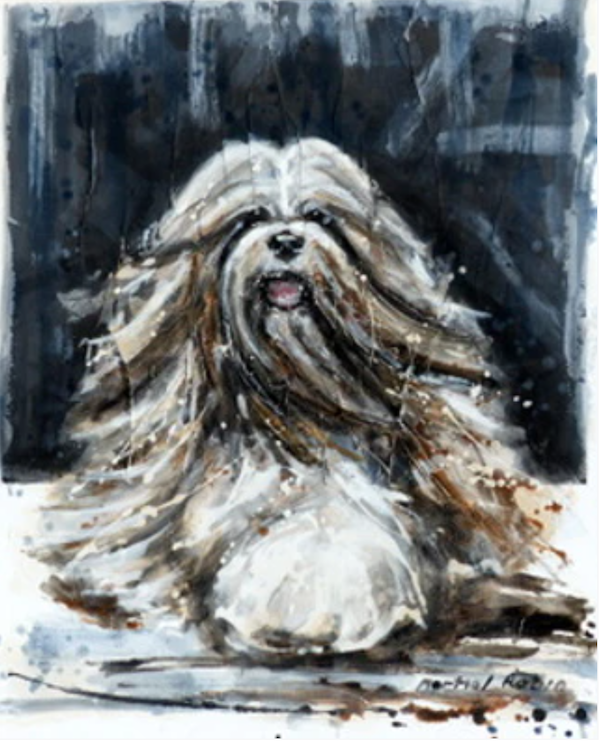
It would be unfair to suggest that it was propaganda that lead to the popularity of the Lhasa Apso in Tibet fifteen centuries ago, but when Tibet converted to Buddhism in the 7th century, it kind of was. Lions had always been symbolically important for Tibetan royalty, a tradition that was represented in the famous lion throne of the Dalai Lama and even in the flag that displayed the king of beasts. The lion and the strength it implied represented the greatness of Buddha who was so powerful that he commanded the mighty lion to guard his temple and follow him around like a dog. An actual dog colored like a lion with its leonine mane was a good way to show uneducated peasants proof of this story, and it didn’t take long for these “lion dogs” to become a common sight in the domiciles of Tibetan nobles and monasteries. Couple this reputation with the legend that lamas who failed to attain Nirvana reincarnated as a Lhasa Apso, and the recipe for popularity is complete. Or is it?
Westerners less influenced by legend or religion made the breed a beloved one based on its own merits: A surprisingly hardy and versatile dog, affectionate but discerning, a truly wonderful dog for the right people.
Read more about the breed’s role as a “lion dog” in this popular post from 2017:
Image: Lhasa Apso by the inimitable Martial Robbins.

Many Lhasas have owned me since 1972, the greatest dogs in the world!
That’s what we hear, Janice, terrific little dogs!